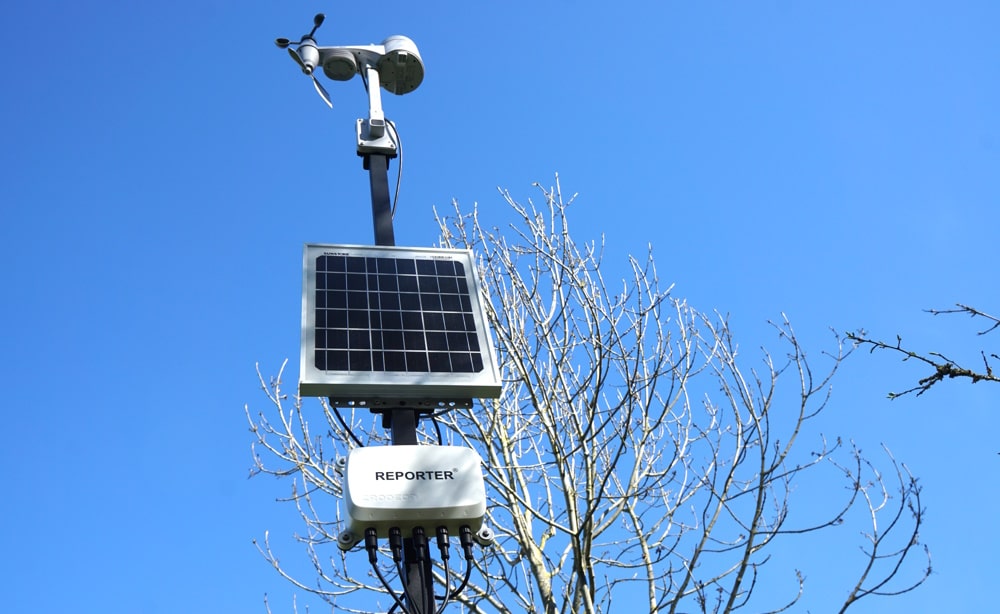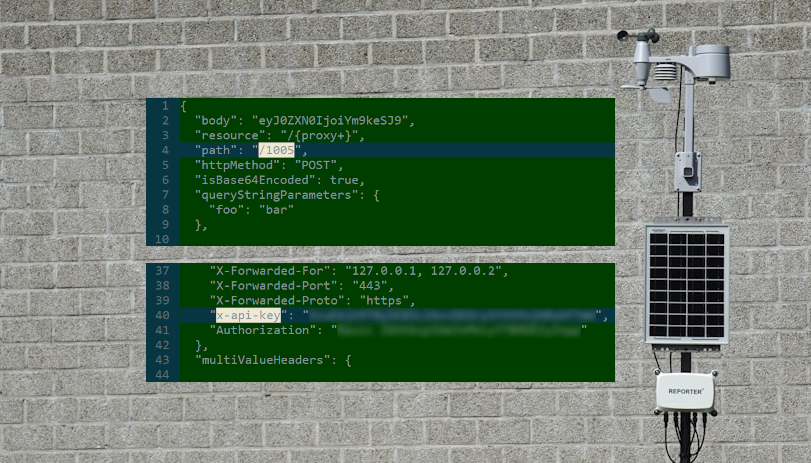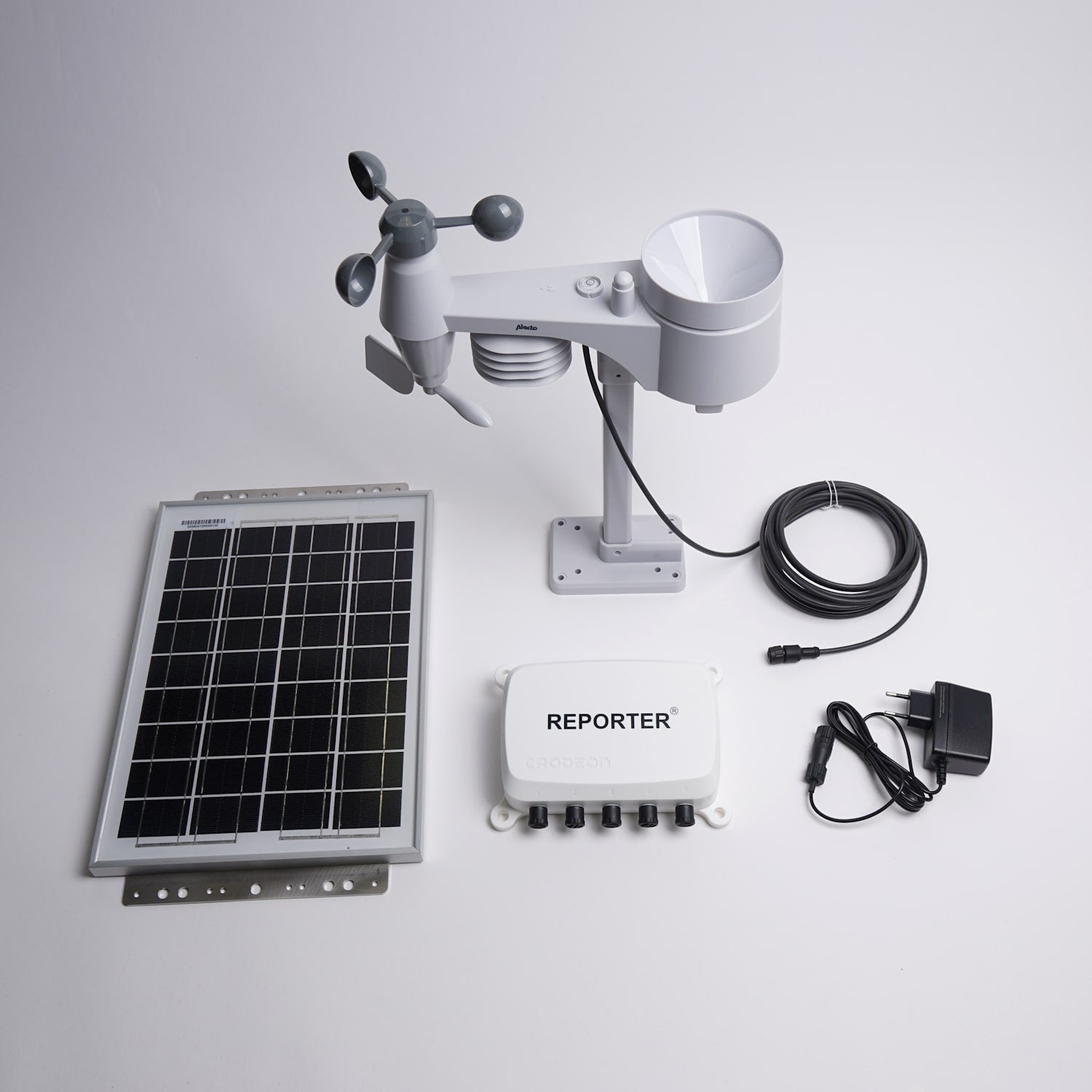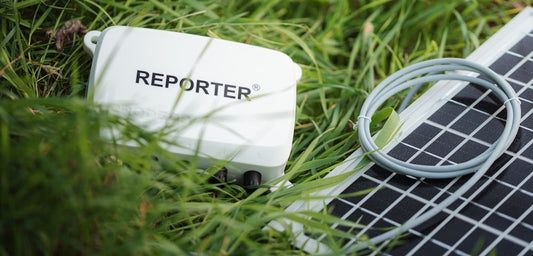10 things to consider when buying a professional weather station
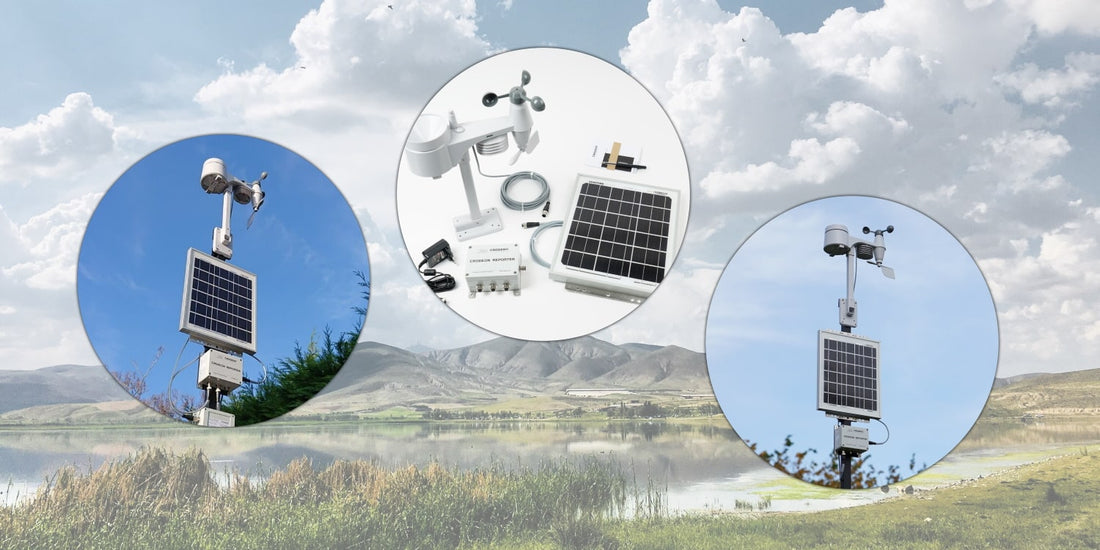
So you're thinking about buying a weather station, but you're not sure how to decide? We understand the amount of options might seem overwhelming at first. This guide should help you decide what's important for you. Read it carefully and don't hesitate to get in touch if you have any questions about this topic.
1 Which sensors do you need?
If you are looking for a professional weather station, at least the following parameters must be included:
- Temperature
- Relative air humidity
- Wind speed, gust, and direction
- Precipitation (rain)
We recommend looking out for a weather monitoring station that isn't restricted to one sensor, but where you can add more sensors without any complexity. For farmers and fruit growers, parameters like soil moisture, wet bulb temperature, and atmospheric pressure are useful extra measurements to take into consideration.
Don't forget about other parameters that are not weather related. Many sensors from the water industry can be highly relevant, like water flow, level, groundwater level or water pressure. Even air quality or power consumption can be added, if your weather station supports these kinds of versatile combinations. You should reach out to the manufacturer if you're not sure about this.
2 How is the weather station powered?
When buying a weather station, consider what kind of power supply you have available. If there isn't any grid power nearby, think about a battery or solar-powered weather station. Having a reliable weather station is key, and you don't want to have to check the power regularly.
A solar-powered weather station is a fully autonomous system that will give you years of use with minimal maintenance as you won't need to worry about changing the batteries. During the day, the solar panel charges the battery, which is used to power the weather station 24/7. The system should also monitor the status of the battery, so you can receive a notification if something is wrong.
3 How can you access the weather monitoring station data?
Having a weather station without easy access to the measurement data is a major deal breaker. Make sure the weather data is available on your conditions. The last thing you want is the obligation to download your weather data through Bluetooth, for example. It should be accessible from anywhere and on any device. So read up on the availability of your data and how this works.
Make sure you can easily view the measurements on your pc or smartphone for daily use. On the other hand, you might need an Excel or CSV export feature for deeper data analysis. If you're planning to integrate the weather data into your own app or software platform, look for a weather station with API access.
4 What kind of connectivity does the weather station use?
Running your company is already complicated enough. You don't need more complexity from your equipment. That is why we suggest you choose a weather monitoring station with included connectivity, without having to install anything. Keep it simple and choose plug-and-play equipment. Focus on the benefits of your data instead of the installation.
The two most popular options are wifi or cellular (2G, 3G, 4G, 5G) connectivity. Wifi has the advantage of being free, if you have your own working wifi network available.
If you have no wifi because you're in the middle of nowhere, or if the network is protected or unreliable, then go for cellular. This requires a sim card with a recurring cost, but it will save you huge amounts of time during setup. Our experience is that remote locations like fruit orchards or vacation homes often have no reliable wifi available. Companies and industrial plants will usually not allow you to tap into their protected wifi networks.
5 How much does a professional weather station cost?
Weather stations differ in price, accuracy and the amount of data they measure. You need to determine how much detail you want and what type of weather station you need. If you're using the weather station for hobby purposes, then a basic model could suffice. If you're looking for a weather station that will help you develop an accurate climate action plan or take steps to monitor dangerous weather, then a more expensive model will be necessary.
To put it simply, the more features you want, the more expensive your weather station will be. Keep a budget of €1.000 in mind for a weather station with autonomous connectivity and power. Figure out what you can spend before you start your search and work from there.

6 Subscription or lifetime use?
Depending on the features you prefer, you will find a weather monitoring station with or without subscription plans. When you need real-time alarming, cellular connectivity or API integration included in your station, a subscription plan will probably be applicable and is this a benefit.
Weather stations that come with a subscription will come with better customer support and easier access through an app or online platform. Think about how this product can help you save time and what this time is worth for yourself. Take this cost into account and calculate your total cost of ownership accurately.
7 Can the weather station send out notifications?
Measuring is the first step, acting on it is the next. A simple way to work with data is setting up alarm notifications. When a situation occurs where one of your measurements exceeds a certain threshold, you want to get notified immediately.
For example, as a fruit grower, getting notified about frost in your orchard can be crucial. Other people might want to be notified when heavy winds or rain occur in a remote location. Think about the importance of alarm notifications for your weather station and make sure you know whether you need this feature.
8 What is the measurement frequency?
The best weather monitoring station will also update more frequently, some as quickly as one new measurement every 30 seconds. The higher the frequency, the higher the cost for the weather station. We recommend getting a weather station that updates at least once every 5 minutes.

9 What is the accuracy of the sensors?
A weather station is worthless if it incorrectly measures weather conditions. Weather stations for hobby use are usually cheaper and less accurate compared to a professional-grade weather monitoring station. For the four must-have parameters on a classic weather station we recommend the following accuracy:
- Temperature: 0,5 °C
- Relative air humidity: 2% RH
- Wind speed, gust, and direction: The greater of 0,3 m/s or 3% of the measured value
- Precipitation (rain): 0,2L per m²
10 Can you install the weather station yourself?
Being able to install and activate your weather station should be a key feature to consider. As a customer, you want the option to install it yourself. Make sure to double-check the power requirements, as we discussed earlier, as well as the connectivity of your weather station. Before installation, you should have tackled both questions.
Given today's cost of technical skilled labour, if you can complete the installation and setup of a weather station yourself, this means a major cost saver.
Conclusion
Which weather station you need therefore depends on which parameters are crucial for you to measure. Additionally, power supply and connectivity are determining factors. Hopefully, the information above has been able to help you make a better decision on which weather monitoring station could help you.
Are you looking for a professional weather station that can measure anywhere? Regardless of whether there is wifi nearby or a power socket? Then you've come to the right place already. Crodeon offers an autonomous weather station that runs on both grid and solar power and transmits its data via the mobile phone network. However remote your project may be, the Crodeon weather station is there for you. Our weather station works with real-time monitoring, data is transmitted to the cloud platform the Crodeon Dashboard. Here you can view your data 24/7, export it to Excel or adjust your alerts.
The Crodeon weather station is easy to install yourself, without needing any extra technical knowledge. Would you like to connect extra sensors to your weather station to measure soil moisture, water flow or PAR light, for instance? No problem, they are already waiting for you.


